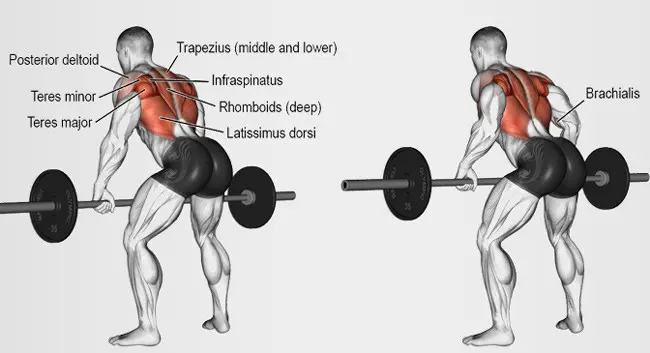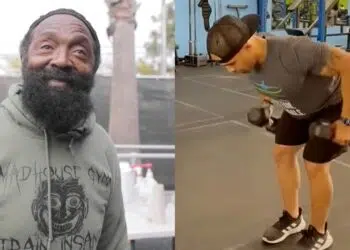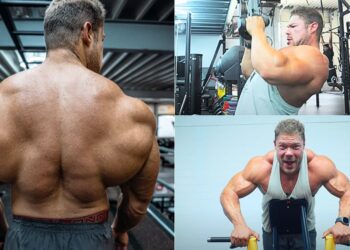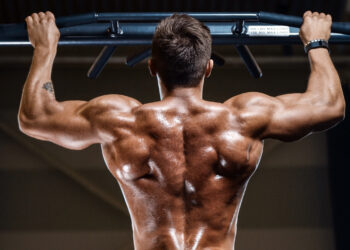A king among mass and strength building exercises, the Bent Over Row is a must in your workout routine. We’re going to break down and discuss everything you need to know so you can get the most out of this amazing movement.
The benefits are abundant while it’s super fun to mix it up and use the many different variations possible with Bent Over Rows.
So let’s not waste any time and get right into it…
Muscle worked
So if you were wondering which muscles are worked during the Bent Over Row, then you’re in good luck because we’ve provided the primary and secondary muscles in which the movement targets.
Main muscle groups worked
Level Up Your Fitness: Join our 💪 strong community in Fitness Volt Newsletter. Get daily inspiration, expert-backed workouts, nutrition tips, the latest in strength sports, and the support you need to reach your goals. Subscribe for free!
- Latissimus Dorsi, Rhomboids, Spinal Erectors, and Trapezius muscles.
Indirect muscles worked
- Rear deltoids
- Biceps/Forearms
- Core muscles
- Hamstrings/Glutes
There’s no shortage of muscles engaged during the movement. It’s a powerhouse!
Benefits
Muscular Hypertrophy and Strength
Why do we perform or even include Bent Over Rows as an exercise in our workout routines? Well, the obvious answer is to build strength and muscle. This movement has been used effectively for decades and by the absolute best athletes in the world.
This is for good reason. See, the Bent Over Row is so effective because it’s a compound movement which allows the lifter to lift heavy amounts of weight. Now, the only exercise where you may be able to load more weight than the row and target the back muscles is the “Deadlift” (Everyone knows this).
However, the row allows for more contraction and a different emphasis on certain muscles as a result (Posterior delts and biceps). Bent Over Rows elicits large muscle activation through the lower and upper back in a symmetrical manner which makes them such a great choice for muscular hypertrophy and strength building purposes. (1)
Improved Deadlifts and Other Pulling movements
Deadlifts are crazy effective when it comes to their overall benefits for muscle mass and strength. Now, there is a nice carryover from the Bent Over Row to the deadlift since muscle in the hamstrings, back and core are all working together in this position to stabilize the weight.
The movements are similar and can both assist in developing a stronger force production towards other pulling movements as well.
Spine and Postural Stability
As you contract your core muscles and strengthen your legs and lower back, your spine and posture benefit from improved stability due to a strengthening of these muscles. A strong core improves posture which is healthy for the spine while creating better breathing habits at the same time. (2)
Lower back pain is something a lot of people suffer with because of a weak core, and it’s really a matter of performing core strengthening movements in order to alleviate a lot of pain.
Chronic disease prevention
Look, you don’t always have to go heavy on compound movements like the Bent Over Row. Using light to moderate resistance will still provide fantastic benefits. Strength training is necessary for preventing and decelerating the development of diseases like Osteoporosis and other strength related diseases.
Level Up Your Fitness: Join our 💪 strong community in Fitness Volt Newsletter. Get daily inspiration, expert-backed workouts, nutrition tips, the latest in strength sports, and the support you need to reach your goals. Subscribe for free!
Strength training also provides stability to the joints which is very beneficial especially for the elderly. (3)
Variations
So we don’t need to explain the Barbell Bent Over Row since it’s the most used method of performing the movement. However, there are some great variations you should include in your routine like the following.
1. Dumbbell Bent Over Rows
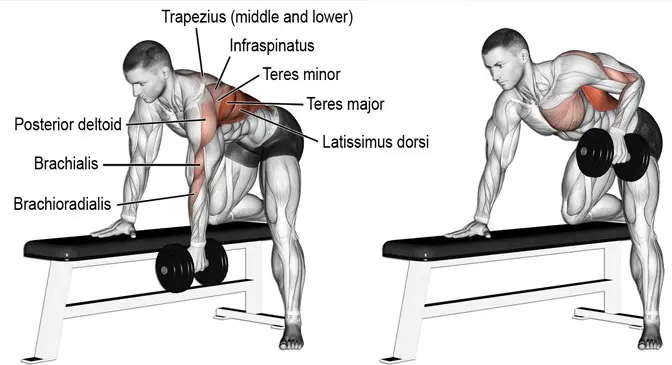
A good thing about Dumbbell Bent Over Rows is you can even do one arm at a time as to correct any imbalances.
2. Cable/Band Bent Over Rows
Cables are fantastic and are possibly even underrated as an option when performing any type of exercise. They provide constant tension while allowing for a natural range of movement and different grip attachment options.
Bands can be used similar to cables since they provide constant tension as well. It’s not to say that one is better than other because that is likely not necessarily the case when comparing these two great tools.
3. Underhand Barbell Bent Over Rows
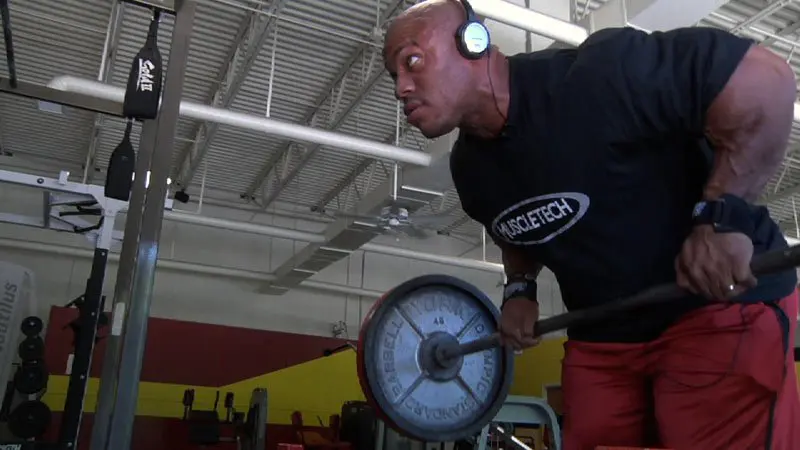
But it all really depends on what’s more comfortable for you. Everyone has their own unique experiences when it comes to finding the right angles and grip positions.
Are There Risk Factors When Performing the Bent Over Row?
Of course, there are but that doesn’t mean you should avoid it. After all, there’s nothing in life without risk (Well, there is but you won’t make any “gains” if you decide to live in a bubble).
Just make sure when you perform the movement, the weight is as close to your body as possible for maximum spine and back protection. It’s crucial to keep your knees bent and core tight if you want your back to see another day. Your safety is nothing to play around with so start slow and after you’re experienced, you can add massive weight to the bar.
You got this!
Final Thoughts
There’s not much else to say about the Bent Over Row as it’s an incredibly effective movement. Just make sure to work on form before you move to the heavyweights as there is a risk with any movement. However, it’s very much worth learning if you want maximal muscle and strength gains.
Now you’re probably surprised that the Bent Over Row works so many muscles but that’s what a compound movement does.
So feel free to experiment with different variations and enjoy the gains ahead!
Interested in measuring your progress? Check out our strength standards for Deadlift, Bent Over Row.

